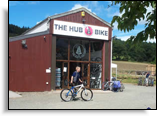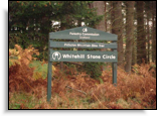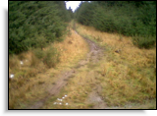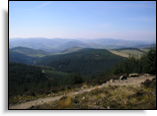Venue Types
The venues on www.MTBtrails.info are categorised into the ‘Venue Types’ listed below. This is not an exact science, and there will be examples of venues which could fit nicely into more than one of these categories. However, normally it will be fairly clear which category a particular venue should be in. The following definitions provide some guidance:-

 Trail Centres typically have multiple purpose built trails which are accessed from a central point. These are the most popular and heavily used of all the venue types and therefore also typically have a higher level of onsite facilities (e.g. cafe, bike shop, toilets, etc). Trail Centres are usually the product of a substantial investment in the infrastructure and the trails are therefore generally built and maintained to a higher standard. The trails are also normally reviewed from a ‘health and safety’ perspective. This does not by any means imply that there are no hazards, it simply means you are less likely to come across an ‘unexpectedly' dangerous scenario which is out of character with the level of risk present on the rest of the trail (though obviously anything can be dangerous if you don’t ride within your limits). The construction methods used for these trails usually make them more durable and suitable for use in all weathers.

 MTB developments are similar to 'Trail Centres' but on a smaller scale. Investment will have been made at some point in order to create one or more purpose built MTB trails. However, the facilities onsite are typically much more limited. Often based at a Forestry Commission (or similar) car park, these venues are officially sanctioned and usually exist in designated biking areas. Due to their ‘built’ nature these trails usually have a lot in common with ‘Trail Centre’ trails in that they are usually fairly durable and designed to cope with ‘all weathers’. Due to the availability of some degree of funding, these trails are also normally (but not always) subject to some level of ‘Health and Safety’ review (as defined for Trail Centres above).

 Natural trails are ones which simply evolve over time through use. They typically have had only minimal levels of work carried out on them, and the work that has been done is typically uncontrolled and carried out by amateurs trying to improve their local area. These trails often make use of multi-use paths, tracks and forestry roads. These multi-use sections are often also used by hikers, dog walkers, horse riders, and others, so this must be taken into account in the way they are ridden. The natural and less predictable nature of these trails is often core to their appeal, but they do need to be ridden with care as they can change from minute to minute due to obstacles being moved, surface conditions changing, etc. Thus, there is even more of a need for the rider to take responsibility for assessing and adapting to risks as they arise. These types of trails are typically less durable and less suitable for use in all weathers.

 Epic trails have much in common with ‘Natural Trails’ but are generally longer and often venture out into the hills making them quite remote in places. This remoteness is a type of risk which is not typically faced to any great degree in the other venue types, and it is therefore very easy to underestimate. A trail with remote sections should never be attempted without levels of experience, equipment, and planning appropriate to the scenario where your bike irrevocably fails at the most remote point. These types of trails often involve big climbs and big decents, and usually follow hill walking tracks and paths not designed with bikes in mind (therefore they can be quite technical in places).
|